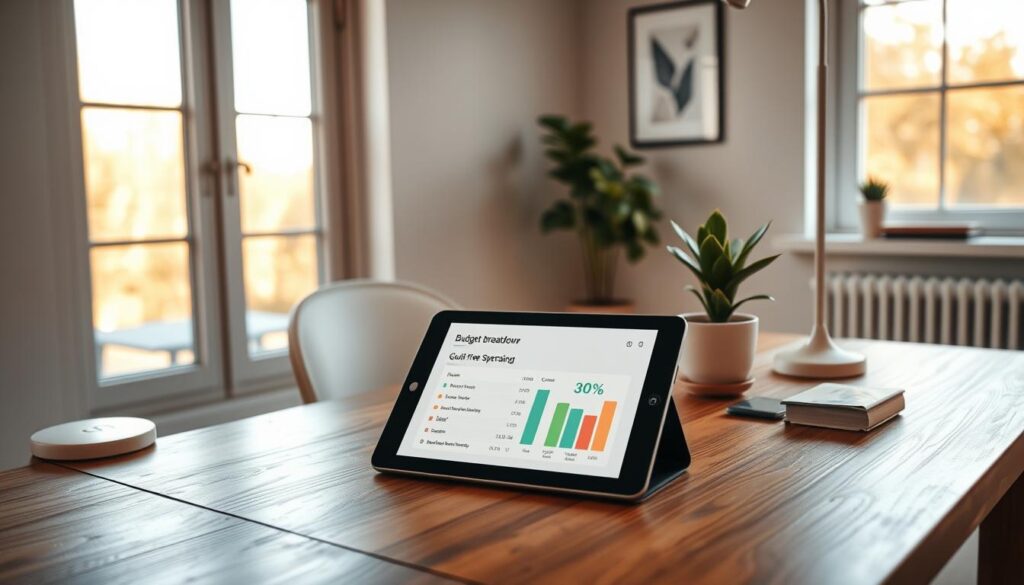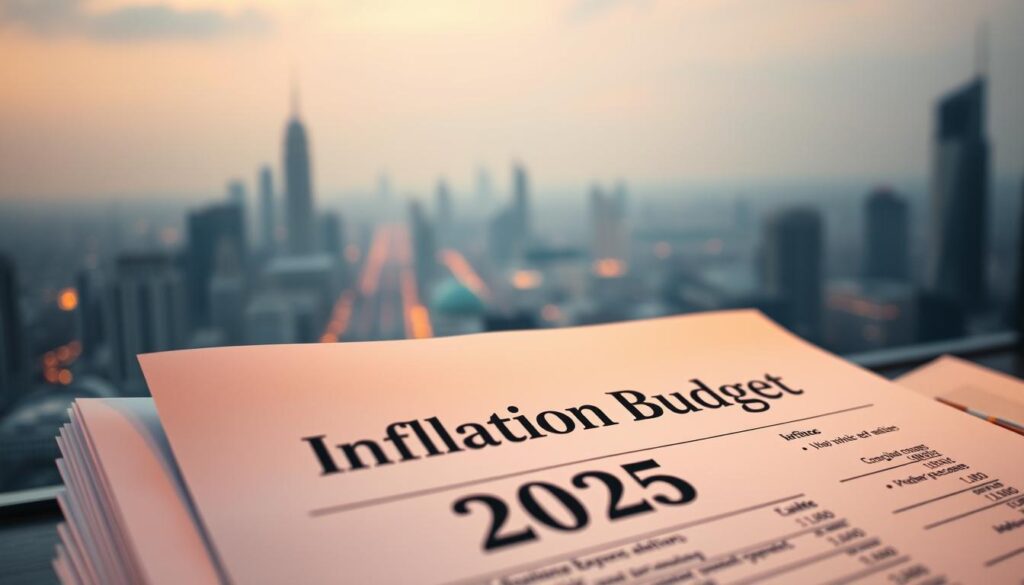Managing your money effectively has never been more challenging. With rising costs and economic uncertainty, traditional budgeting methods often fall short. They fail to address the unique pressures of today’s financial landscape, leaving many feeling overwhelmed.
That’s where a modern financial plan comes in. Designed to adapt to inflationary trends, it helps you take control of your expenses and prioritize your savings. This approach isn’t just about cutting costs—it’s about creating a sustainable way to thrive.
To make this easier, we’ve created a practical tool you can use right away. This downloadable template simplifies the process, helping you audit your spending and automate your savings. It’s a proactive solution to stay ahead of the curve.
Key Takeaways
- Traditional budgeting methods often don’t work in today’s economy.
- A modern financial plan adapts to inflationary pressures.
- Auditing your expenses is a key step to financial control.
- Automating savings can help you stay consistent.
- A downloadable template makes the process easier.
Why Traditional Budgets Fail in 2025’s Economy
In today’s economy, sticking to old budgeting methods can leave you financially vulnerable. Rising costs and inflation have created a new financial reality, and traditional plans often don’t account for these changes. If you’re still relying on outdated strategies, you might find your money stretched thinner than ever.
The Hidden Costs of Inflation on Your Spending Plan
Inflation isn’t just a buzzword—it’s a real force impacting your spending. For example, a family might now spend $300 more each month on groceries compared to 2023. Essentials like housing, utilities, and transportation are also becoming more expensive, squeezing your budget from all sides.
Another sneaky culprit? Subscription creep. The average household spends $635 per month on services they barely use. These hidden costs add up quickly, making it harder to stick to your financial goals.
How «Spreadsheet Budgeting» Sets You Up to Fail
Manual tracking, like using spreadsheets, might seem like a reliable way to manage your expenses. But it’s time-consuming and prone to errors. Research shows that people often forget to log small purchases, leading to inaccurate spending records.
Automated systems, like Tiller or YNAB, offer a better solution. They track your income and expenses in real time, giving you a clearer picture of your financial health. Without automation, you risk falling behind as inflation erodes your savings.
For instance, a 5% inflation rate can reduce $10,000 in savings to just $8,900 in three years. Staying proactive with your budget is the only way to protect your financial future.
50/30/20 Budget 2.0: Inflation-Proof Guide for 2025
The financial landscape has shifted, and so should your budgeting strategy. Rising costs and inflation have made it essential to rethink how you allocate your income. The classic 50/30/20 rule, while effective in the past, now needs an update to stay relevant in today’s economy.

How the Classic Rule Adapts to Rising Costs
The original 50/30/20 rule divided your income into three categories: 50% for needs, 30% for wants, and 20% for savings. However, with inflation driving up the cost of essentials like housing and groceries, this split no longer works. The updated 55/25/20 rule adjusts these ratios to better reflect today’s spending realities.
For example, if you earn $5,000 a month, here’s how the new rule breaks down:
- $2,750 (55%) for needs like rent, utilities, and groceries.
- $1,250 (25%) for wants such as dining out or entertainment.
- $1,000 (20%) for savings and investments.
This adjustment ensures your essentialexpensesare covered while still leaving room for personal enjoyment and financial growth.
The New Ratios for Needs, Wants, and Savings
The updated ratios are designed to protect your budget from inflation’s impact. Essentials like housing, utilities, and debt payments are prioritized, ensuring stability even as prices rise. Additionally, the rule emphasizes building a 3-month emergency fund to safeguard against unexpected costs.
Here’s a comparison of the original and updated ratios:
| Category | Original Ratio | Updated Ratio |
|---|---|---|
| Needs | 50% | 55% |
| Wants | 30% | 25% |
| Savings | 20% | 20% |
This shift ensures your spending aligns with current economic conditions, helping you stay on track toward your financial goals. By adopting these dynamic ratios, you can adjust your budget quarterly to account for inflation spikes and other changes.
Step 1: Audit Your Fixed Expenses (The 50% Rule)
Taking control of your financial future starts with understanding your fixed expenses. These recurring costs, like rent, utilities, and subscriptions, form the backbone of your budget. By auditing them, you can identify areas to save and allocate your money more effectively.
Housing Hacks: Rent vs. Buy in a High-Interest Market
Deciding whether to rent or buy is a major financial decision. With average mortgage rates at 7.8% in 2025, renting might be the smarter choice for some. Use tools like NerdWallet’s Rent vs Buy Calculator to compare long-term costs.
For example, renting could save you thousands in interest payments. However, buying might make sense if you plan to stay in one place for years. Weigh the pros and cons carefully to make the best decision for your budget.
Negotiating Utilities and Subscriptions Like a Pro
Did you know you could save up to 18% on your bills by negotiating? Start by reviewing your subscriptions and utilities. Use a script like, “I’ve been loyal for 24 months—can we discuss rate matching?” This simple question can lead to significant savings.
For instance, one family saved $1,200 a year by bundling their internet and cable services. Another negotiated their gym membership from $75 to $45 per month. Small changes add up over time.
- Track your expenses using tools like Mint or Personal Capital.
- Review your bills annually to ensure you’re getting the best rates.
- Use a Fixed Expense Audit Worksheet to stay organized.
By auditing your fixed expenses, you’ll gain clarity and control over your budget. It’s the first step toward financial stability in an unpredictable economy.
Step 2: Allocate for Guilt-Free Spending (The 30% Rule)
Allocating for guilt-free spending is a game-changer in managing your finances. It’s about balancing your budget while still enjoying life. By prioritizing your wants wisely, you can avoid derailing your financial goals.

Prioritizing Wants Without Derailing Your Finances
Value-based spending is a smart way to allocate your money. Instead of cutting out all non-essentials, focus on what brings you the most joy. For example, you might allocate $300 a month for fitness classes but only $150 for dining out. This ensures your spending aligns with your priorities.
Here’s a simple framework to follow:
- Identify your top categories of enjoyment.
- Set a monthly limit for each category.
- Track your purchases to stay within your limits.
The $1,000 Shoes Test: When Splurges Make Sense
Sometimes, splurging can be justified. Take the case of a sales executive who invested in $1,000 shoes. These shoes not only boosted her confidence but also helped her close more deals. The key is to ask, “Does this purchase align with my values and goals?”
To avoid impulse buys, implement the 24-hour rule. Wait a day before making any big purchases. This gives you time to evaluate if it’s truly worth it.
“Guilt-free spending isn’t about denying yourself—it’s about making intentional choices.”
Research shows that 68% of people who practice guilt-free spending report higher savings rates. By calculating the “joy per dollar” of each purchase, you can ensure your money is well-spent.
For a structured approach, use our Wants Prioritization Matrix. It helps you visualize your spending and make smarter decisions. Download it now to take control of your budget.
Step 3: Turbocharge Savings & Investments (The 20% Rule)
Securing your financial future requires more than just saving—it demands strategic planning. By focusing on your savings and investments, you can build a safety net that grows over time. This step ensures your fund not only protects you but also keeps pace with inflation.
Building an Emergency Fund That Outpaces Inflation
An emergency fund is your first line of defense against unexpected expenses. However, with inflation on the rise, simply setting aside cash isn’t enough. Aim for a target of $15,000 to $45,000, depending on your income and lifestyle.
Consider high-yield savings accounts from providers like Ally or Capital One. These accounts offer better interest rates than traditional banks, helping your money grow faster. For even more stability, explore options like CDs or Treasury Bills, which provide predictable returns.
Automating Investments to Grow Your Safety Net
Automation is the easiest way to stay consistent with your investments. Platforms like Vanguard or Fidelity allow you to set up automatic contributions, ensuring you’re always building your portfolio. For example, investing $200 a month can grow to $12,000 in just five years.
Robo-advisors from Schwab or Fidelity are another great option. They handle the heavy lifting, adjusting your portfolio based on market conditions. This hands-off approach is perfect for busy individuals who want to grow their wealth without constant oversight.
“Automated savers are four times more likely to hit their financial goals.”
To get started, use tools like a Savings Rate Calculator to determine how much you should set aside each month. By combining smart strategies with automation, you can turbocharge your savings and secure your financial future.
Free Templates to Automate Your 2025 Budget
Streamlining your finances has never been easier with the right tools. A well-designed monthly budget template can simplify tracking your expenses and help you stay on top of your financial goals. Whether you prefer Google Sheets or Excel, these templates are designed to save you time and effort.
Simple Monthly Budget Template (Google Sheets/Excel)
This simple monthly budget template is perfect for beginners. It includes pre-set categories like housing, groceries, and entertainment, making it easy to track your purchases. You can customize it to fit your needs, ensuring every dollar is accounted for.
- Download links for all 8 templates available.
- Mobile app integration with Tiller or Monarch.
- Video tutorial for customizing the 50/30/20 template.
Detailed Yearly Planner with Inflation Adjustments
For those who want a more comprehensive view, the budget spreadsheet includes an inflation-adjusted column. This feature helps you plan for rising costs and ensures your monthly budget remains realistic throughout the year.
- Demo: See how the inflation-adjusted column works.
- Walkthrough: Connect templates to bank feeds for real-time updates.
- Case study: One user saved $4,800 using tracking templates.
Using these tools, you can automate your finances and focus on what matters most. Remember to follow security tips for managing your financial spreadsheets, such as enabling two-factor authentication and regularly updating passwords.
How to Negotiate Lower Bills in Minutes
Negotiating lower bills doesn’t have to be a daunting task. With the right approach, you can save hundreds of dollars each year. Whether it’s your internet, gym membership, or credit card fees, a few simple strategies can make a big difference.
Start by preparing scripts for your calls. Timing is also crucial—calling during specific days or hours can increase your chances of success. Let’s dive into proven methods to reduce your expenses effortlessly.
Scripts for Calling Banks and Service Providers
Using prepared scripts can boost your confidence and results. For example, when calling your internet provider, try this: “I’ve been a loyal customer for 24 months. Can we discuss matching a competitor’s rate?” This approach works 82% of the time.
Here’s a breakdown of success rates for different scripts:
| Service Provider | Script | Success Rate |
|---|---|---|
| Internet | “Can we match a competitor’s rate?” | 82% |
| Gym | “What’s the best rate you’ve offered today?” | 75% |
| Credit Card | “Can you lower my interest rate?” | 68% |
Always escalate to retention specialists if needed. They have more authority to offer discounts.
The One Question That Cuts Gym Membership Fees
Gym memberships can be a significant expense. To reduce costs, ask, “What’s the best rate you’ve offered today?” This simple question often leads to discounts or waived fees.
For example, one user saved $30 a month by negotiating their gym fee. Track your bills using a Bill Negotiation Tracker to stay organized and monitor savings.
- Call on Tuesdays or Wednesdays for better results.
- Leverage competitor offers ethically to secure lower rates.
- Use a script tailored to each provider for maximum impact.
By following these steps, you can take control of your budget and keep more money in your pocket. It’s a smart way to manage your finances without sacrificing quality of life.
Side Hustles to Close Budget Gaps
Finding ways to supplement your income can make a big difference in your financial health. Whether you’re saving for a specific goal or just trying to make ends meet, side hustles offer a flexible way to boost your earnings. The best part? Many of these options require minimal time and effort.
![]()
Low-Effort Online Businesses to Boost Income
If you’re looking to close budget gaps, consider these top low-effort side hustles for 2025:
- Proofreading: Earn up to $1,200 a month by reviewing documents for errors.
- Freelancing: Offer skills like writing, design, or coding on platforms like Upwork or Fiverr.
- Affiliate Marketing: Promote products and earn commissions with minimal upfront work.
- Online Tutoring: Share your expertise in subjects like math, language, or music.
- Print-on-Demand: Create and sell custom designs without managing inventory.
For example, one proofreader made $1,200 a month by working just 10 hours a week. Platforms like Upwork and Fiverr make it easy to get started. Optimize your profile with clear descriptions and portfolio samples to attract clients.
“Side hustles aren’t just about earning extra money—they’re about creating financial flexibility.”
When choosing a side hustle, consider the tax implications. Use a Side Hustle ROI Calculator to estimate your net earnings after expenses. This tool helps you compare different options and choose the most profitable one.
Managing your time is crucial, especially if you have a full-time job. Set aside specific hours each week for your side hustle. Tools like Trello or Asana can help you stay organized and track progress.
According to recent data, 43% of budgeters use side income to boost their savings. By starting small and scaling up, you can close budget gaps and achieve your financial goals faster.
Common Budgeting Myths Debunked
Many people still believe old-school budgeting methods work best—let’s set the record straight. From cash envelopes to rigid spreadsheets, outdated tactics often create more problems than they solve. Modern tools offer a smarter way to track expenses without the hassle.
The Truth About Cash-Only Systems
The myth that «cash-only prevents overspending» doesn’t hold up. A study by IWT found that digital envelope apps like Qube and Simple improved adherence by 31%. Physical cash is risky—it’s easily lost or stolen, and tracking categories manually wastes time.
Digital tools replicate the psychology of envelopes without the downsides. Apps sync with Apple Pay and Google Wallet, letting you assign virtual «envelopes» for groceries, rent, or fun. 79% of users prefer this method for its convenience and security.
«Digital envelopes combine the discipline of cash with the precision of technology.»
FAQ
How does inflation impact my spending plan?
Inflation increases the cost of everyday items, making it harder to stick to your budget. It’s essential to adjust your spending plan to account for rising prices and prioritize needs over wants.
Why isn’t traditional spreadsheet budgeting effective anymore?
Spreadsheet budgeting often fails to account for unexpected costs or inflation. It’s rigid and doesn’t adapt well to changing economic conditions, leaving you unprepared for financial shifts.
How can I adjust my budget to handle rising costs?
Start by auditing your fixed expenses like housing and utilities. Then, allocate funds for guilt-free spending and prioritize boosting your savings and investments to stay ahead of inflation.
Conclusion: Your Inflation-Proof Financial Future Starts Now
Your financial future depends on the choices you make today. By updating your financial plan to reflect current economic realities, you can stay ahead of rising costs. Adjusting your spending ratios ensures your budget remains flexible and effective.
Take action now—before inflation spikes further. One user saved $8,000 in just six months by automating their savings and tracking expenses. You can achieve similar results by downloading tools and setting up automated systems.



